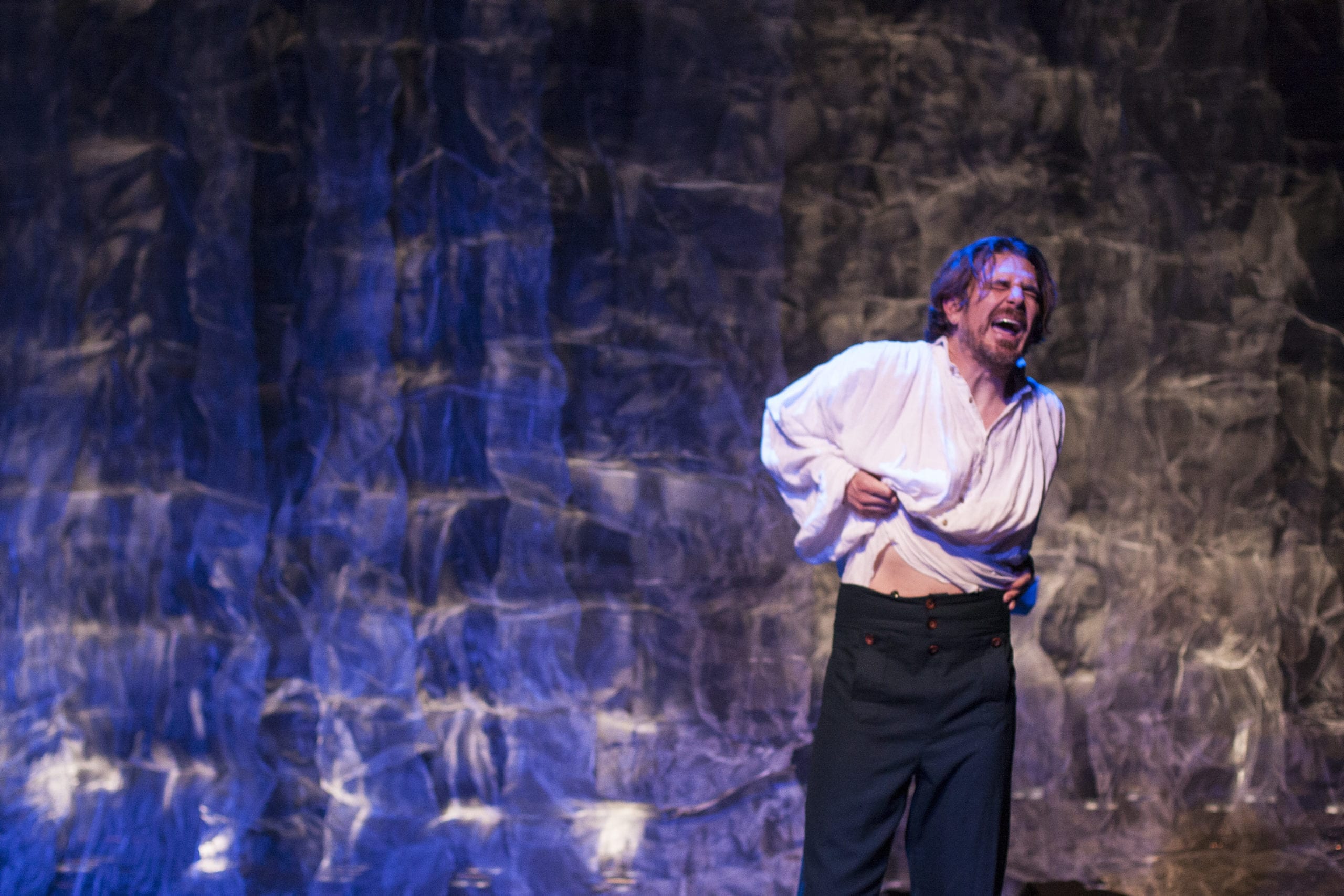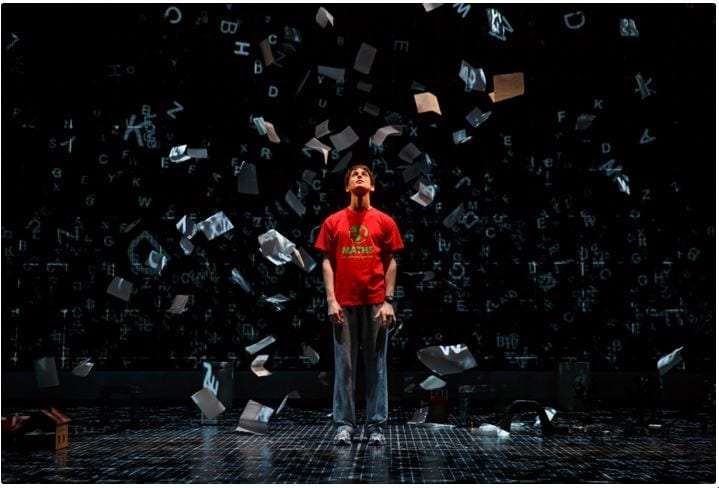SALT LAKE CITY — Within a dim spotlight, a violinist (Kathryn Eberle) and pianist (Jason Hardink) play Beethoven’s Kreutzer Sonata. The stage holds naught but the two musicians, their instruments, and a backdrop of three translucent screens. The musicians’ expressive style emanates from their posture, expressions, and the beautiful melody they weave together.
Moments earlier, the play’s nameless protagonist, portrayed by Robert Scott Smith, exclaimed that no one could truly understand his history without first hearing the sonata that drove him to murder his wife. Smith then left the audience to listen to—and build their own impressions of—The Kreutzer Sonata.
If you’ve ever tried to share a favorite song with an unreceptive friend, you’ll have some understanding of the distinctive power of music to provoke an experience unique to each listener. A piece of music can provoke sights and sounds long since forgotten, memories and emotions tucked in the recesses of the soul, and so vividly as to be transportive to the listener. But trying to instill another person with an appreciation for such a deeply personal experience is often futile.
Eric Samuelsen’s adaptation of Tolstoy’s novella overcame this interpersonal divide by interspersing his script with excerpts from the sonata that fit the protagonist’s emotions. When first treated to The Kreutzer Sonata, the audience were left to draw their own conclusions about the transitioning moods within the piece and the passion driving it forward. But when Smith reentered the stage and embarked on the tale of his unhappy marriage, the audience could begin to relate the music to his specific experience.
The protagonist’s story begins when he meets and, for motivations more financial than romantic, marries his wife. Smith portrays both members of the unhappy union, turning his face one way and another as he told his and her sides of their dialogue. While this style of dialogue could easily become distracting, Jerry Rapier’s direction draws out the absurdity in the protagonist’s madness without allowing the action to be waylaid by the the potentially comic theatrical device.
The protagonist dresses in a manner suited to a cultured man of the nineteenth century. The musicians dress formally as well, the violinist in a jeweled ball gown and the pianist in a well-tailored suit (by costume designer Philip R. Lowe). The musicians keep their places in the dim light, even as Smith exits or walks into the shadows just outside center stage. The lighting resembles a dimming twilight, with the only light seeming to emanate from the translucent screens backing the stage before them (set designer Randy Rasmussen, with assistance by Lynn Clark; lighting designer Jesse Portillo). The effect of this sparse set is that the music seems to drive the protagonist’s story far more than any choice of his own; as Smith winds his way between center stage, its darkened edges, and behind the screens, often his shadow is all that accompanies his words.
Early in his story, Smith leaves the stage each time the musicians play, allowing the music to speak for itself in its reiteration of his tale. But as Smith becomes increasingly impassioned, he walks on and off stage, ever closer to the musicians, so that the script and music are no longer mere interpretations of one another but rather a single piece of art. At the height of action, Smith’s passionate tale crescendoes with the music, giving the audience a crystal clear view of how the protagonist’s tragedy is driven by The Kreutzer Sonata and can only be truly understood through that lense.
The Kreutzer Sonata beautifully portrays the unique relationship between music and the human experience. Americans are so used to hearing music paired with action in visual media that music’s ineffable power of expression is easy to take for granted. In The Kreutzer Sonata, music is pulled from the background of the story and revealed to be the play’s driving force. Plan-B Theatre Company’s production calls attention to the ability of music to take on a life of its own and carry a meaning so vivid that, once seen, it’s impossible not to believe that meaning to have been there all along.






